Understand the concept of a ‘design industry’
Describe the concept of a ‘design industry’
Explain what the design industry does and how it relates to other industries?
WHAT IS DESIGN AND WHY IT MATTERS
BY MAT HUNTER, CHIEF DESIGN OFFICER, DESIGN COUNCIL
There are countless definitions of design, as you might expect of a creative endeavour. Some aim to categorise design, to explain how it is different from or related to other activities, while others try to inspire good design.
Here’s a simple definition from our former Chairman, Sir George Cox in the Cox Review:
'Design is what links creativity and innovation. It shapes ideas to become practical and attractive propositions for users or customers. Design may be described as creativity deployed to a specific end.’ The Cox Review
Most of the results of design are visible, and that lends itself to another simple definition: ‘Design is all around you, everything man-made has been designed, whether consciously or not’.
The question therefore isn't so much 'what is design and why does it matter?' but 'how can I use good design to make the world around me better?'
HOW IS DESIGN DIFFERENT FROM OTHER ACTIVITIES?
Perhaps the most obvious attribute of design is that it makes ideas tangible, it takes abstract thoughts and inspirations and makes something concrete. In fact, it’s often said that designers don’t just think and then translate those thoughts into tangible form, they actually think through making things. This ability to make new ideas real from an early stage in developing products or services means that they have a greater chance of becoming successful more quickly.
Another, sometimes less obvious, attribute of design is that it is human-centred. Designers are sometimes caricatured as self-obsessed, but the truth is that really great designers care hugely about the real people who will use the product, service, building or experience they are developing. This focus on users inspires great ideas and ensures that solutions meet real needs, whether the users are fully aware of them or not.
This pragmatic process of making ideas tangible and then trying them out with users means that design has a particular ability to make things simple. Anything that is too complicated to understand, communicate or operate is soon exposed. Perhaps this is why really great design can seem as obvious as common sense.
Finally, design is collaborative. The dual qualities of tangibility and human-centeredness mean that the design process is very good at engaging others. Design processes are increasingly being used as a way to enable groups of designers and non-designers to work together to tackle big issues.
HOW DO DESIGNERS DESIGN?
Every designer has a slightly different approach and different design specialisms also have their own ways of working, but there are some general activities common to all designers. At the Design Council we like to illustrate this with a ‘Double Diamond’ model.
Divided into four distinct phases, Discover, Define, Develop and Deliver, it maps how the design process passes from points where thinking and possibilities are as broad as possible to situations where they are deliberately narrowed down and focused precisely on distinct objectives.
DISCOVER
The first quarter of the double diamond model covers the start of the project. Designers try to look at the world in a fresh way, noticing new things and seeking inspiration. They gather insights, developing an opinion about what they see, deciding what is new and interesting, and what will inspire new ideas. Specific methods include: Market research, User research, Managing and planning and Design research groups.
DEFINE
The second quarter represents the definition stage, in which designers try to make sense of all the possibilities identified in the ‘Discover’ phase. Which matters most? Which should we act on first? The goal here is to develop a clear creative brief that frames the fundamental design challenge to the organisation. Key methods during the Define stage are: Project development, Project management and Project sign-off.
DEVELOP
The third quarter marks a period of development where solutions are created, prototyped, tested and iterated. This process of trial and error helps designers to improve and refine their ideas. Key activities and objectives during the Develop stage are: brainstorming , prototyping, multi-disciplinary working, visual management, development methods and testing.
DELIVER
The final quarter of the double diamond model is the delivery stage, where the resulting product or service is finalised and launched. The key activities and objectives during this stage are: Final testing, approval and launch and Targets, evaluation and feedback loops.
The creative process is complicated, making it difficult to capture simply but this sort of explanation can at least help make it appear a little less mysterious.
HOW DO ORGANISATIONS USE DESIGNERS?
In the most advanced organisations design is used at every level of the business from high level strategy, helping to find new opportunities for growth, to detailed implementation, ensuring that every experience that a customer has is as productive and engaging as it can be.
The key to using design effectively at any level is the creative brief. The brief defines the challenge, the problem to be solved, the opportunity to realised. Writing an effective brief is a creative exercise in its own right.
This brief is then tackled by a chosen design team. Some organisations choose to have in-house design teams, while others use external design agencies. Most use a mix of both. Here are more thoughts on design management.
THE (TRIPLE) BOTTOM LINE
At the Design Council we are passionate about using design to tackle some of the big issues in the world, from security and health to the environment and supporting communities. At the same time we work to support the UK’s manufacturing and service companies, helping them use design to make their offerings world-beating. And finally we work to measure the results of success – for instance how financial performance improves through effective use of design – to persuade others of the value of good design and the perils of bad design.
We think of it as a ‘triple bottom line’. How does good design benefit people, how does it benefit the planet and how does it generate profit for business?
Understand the scope for employment in the design industry
Outline the entry opportunities for employment in the design industry
Outline key design disciplines and how they interrelate
Identify the key job roles and responsibilities in a design company
As a graphic designer you'll need to listen to clients and understand their needs before making design decisions
A graphic designer works on a variety of products and activities, such as websites, advertising, books, magazines, posters, computer games, product packaging, exhibitions and displays, corporate communications and corporate identity, i.e. giving organisations a visual 'brand'.
You'll work to a brief agreed with the client, creative director or account manager and will develop creative ideas and concepts. The appropriate media and style has to be chosen to meet the client's objectives.
The work demands creative flair, up-to-date knowledge of industry software and a professional approach to time, costs and deadlines.
Responsibilities
You may need to manage more than one design brief at a time and typical activities include:
- meeting clients or account managers to discuss the business objectives and requirements of the job;
- estimating the time required to complete the work and providing quotes for clients;
- developing design briefs that suit the client's purpose;
- thinking creatively to produce new ideas and concepts and developing interactive design;
- using innovation to redefine a design brief within the constraints of cost and time;
- presenting finalised ideas and concepts to clients or account managers;
- working with a range of media, including computer-aided design (CAD) and keeping up to date with emerging technologies;
- proofreading to produce accurate and high-quality work;
- demonstrating illustrative skills with rough sketches and working on layouts ready for print;
- commissioning illustrators and photographers;
- working as part of a team with printers, copywriters, photographers, stylists, illustrators, other designers, account executives, web developers and marketing specialists.
Job Description: Product Designer
Almost everything we use in our day-to-day lives, from chairs and cutlery to clocks and computers, has been designed by a product designer. They also work on specialist products like medical, electronics or telecommunications equipment.
Product designers use their design skills and technical knowledge to improve the way that existing products work and look, and/or produce them at a lower cost. They may also be involved in designing entirely new products.
Job Description, salaries and benefits
Product designers design most things we use in our day-to-day lives, from chairs and cutlery to clocks and computers, as well as specialist products like medical, electronics or telecommunications equipment.
They aim to improve the way that existing products work and look and/or produce them at a lower cost. They may also be involved in designing entirely new products.
Product designers discuss designs with colleagues and clients, as well as working closely with engineers, model makers, sales and marketing staff and other skilled people. They use drawings, 3-D models and computer designs to express their ideas. They should understand technology, production methods and materials, and be able to meet deadlines and work within budgets.
Product designers usually work around 37 hours a week from Monday to Friday. They are usually based in studios, offices and workshops, but may also spend time in the factories where products are made.
Salaries may range from around £17,000, to over £45,000 a year.
A product designer should:
- be creative with an eye for shape and colour
- understand different materials and production methods
- have technical, practical and scientific knowledge and ability
- be interested in the way people choose and use products.
Employers include manufacturing companies and design consultancies throughout the UK and overseas. New entrants face strong competition for jobs, but demand for experienced designers is high.
New entrants usually need a degree or an HNC/HND in product design. Graduates from other art and design courses may be able to move into product design if they can demonstrate their interest in this area of work. Employers expect to see a strong portfolio of design work. Adults with relevant qualifications, or experience in fields like architecture or engineering, may be welcomed on degree courses.
Training is often a combination of on-the-job training and short courses on topics like the use of new software packages. Training and professional development programmes are offered by professional bodies. Product designers must keep their skills and knowledge up to date throughout their careers to meet the challenges posed by environmental concerns and new materials and technology.
Promotion opportunities include senior designer or team leader roles, as well as the possibility of moving into project management. Self-employed designers progress by building their businesses and expanding their list of clients.
What is the work like?
In the course of their work, product designers must consider:
- who will buy the product and how they will use it
- how to make the product easy and safe to use
- how to make the product visually attractive to the target audience
- what materials to use
- how to make the product reliable
- how to make the product cost-effective and environmentally friendly to produce.
Responsibilities can vary, but are likely to involve:
- meeting clients or colleagues to discuss the design brief
- working closely with engineers, model makers, sales and marketing staff and other skilled people
- understanding technology, production methods and materials (such as textiles, metals and plastics)
- working within budgets
- working to deadlines
- researching similar products and developing ideas
- making sketches of ideas by hand or computer, and developing the most effective ideas into detailed drawings using specialist computer software
- ordering samples or working models of designs
- producing reports and presenting their ideas to colleagues and clients at various stages of the design process
- modifying their ideas according to the feedback they receive at these sessions
- overseeing the testing of the chosen design
- making presentations to potential clients in order to win new contracts.
Some product designers are involved in researching markets and consumer trends.
Starting salaries may be around £17,000 to £20,000 a year.
Understand the current changes that impact on the design industry
Describe briefly how the following factors may have an impact on the design industry:
Describe briefly how the following factors may have an impact on the design industry:
• Globalisation
• New technology
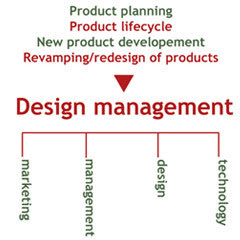

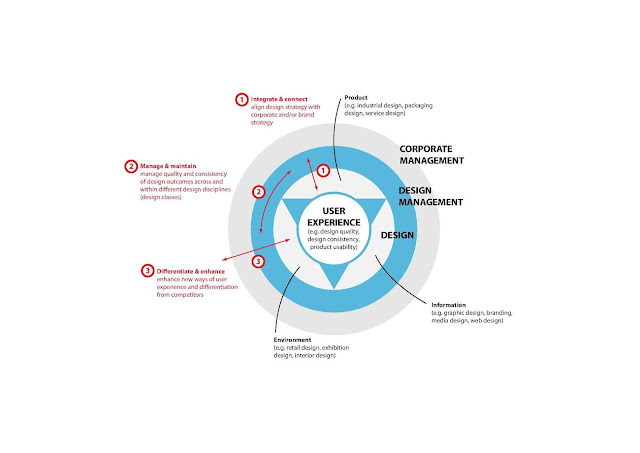

















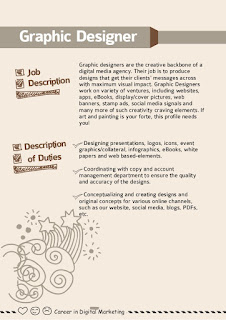

















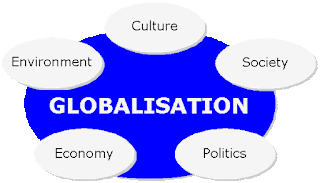































































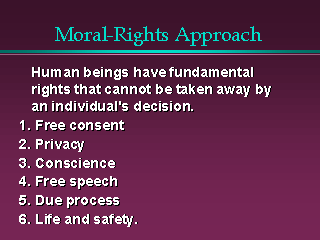











No comments:
Post a Comment
Note: Only a member of this blog may post a comment.